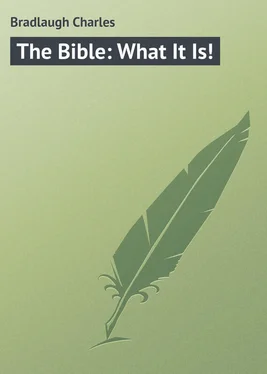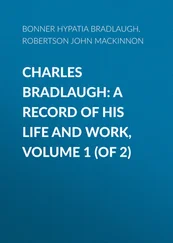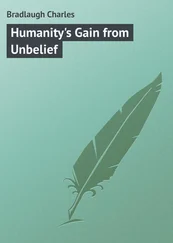Charles Bradlaugh - The Bible - What It Is!
Здесь есть возможность читать онлайн «Charles Bradlaugh - The Bible - What It Is!» — ознакомительный отрывок электронной книги совершенно бесплатно, а после прочтения отрывка купить полную версию. В некоторых случаях можно слушать аудио, скачать через торрент в формате fb2 и присутствует краткое содержание. Жанр: foreign_prose, на английском языке. Описание произведения, (предисловие) а так же отзывы посетителей доступны на портале библиотеки ЛибКат.
- Название:The Bible: What It Is!
- Автор:
- Жанр:
- Год:неизвестен
- ISBN:нет данных
- Рейтинг книги:5 / 5. Голосов: 1
-
Избранное:Добавить в избранное
- Отзывы:
-
Ваша оценка:
- 100
- 1
- 2
- 3
- 4
- 5
The Bible: What It Is!: краткое содержание, описание и аннотация
Предлагаем к чтению аннотацию, описание, краткое содержание или предисловие (зависит от того, что написал сам автор книги «The Bible: What It Is!»). Если вы не нашли необходимую информацию о книге — напишите в комментариях, мы постараемся отыскать её.
The Bible: What It Is! — читать онлайн ознакомительный отрывок
Ниже представлен текст книги, разбитый по страницам. Система сохранения места последней прочитанной страницы, позволяет с удобством читать онлайн бесплатно книгу «The Bible: What It Is!», без необходимости каждый раз заново искать на чём Вы остановились. Поставьте закладку, и сможете в любой момент перейти на страницу, на которой закончили чтение.
Интервал:
Закладка:
'If the earth had existed independently of the sun, it would have been a wanderer in space, under circumstances which are decidedly inconceivable. Yet Genesis relates that there was light, without a sun to give it forth, or medium to diffuse its rays. We have also involved in this order of creation the phenomena of a diurnal rotation, indicated without any central source of light to make the period or time of revolution, and a planet revolving in an orbit without a centre round which to revolve. Scientific observations and deductions, every day evidences of the physical laws that govern our solar system, lead clearly to the conclusion that the sun, 140,000 times larger than the earth, was the first born. Genesis asserts that our pigmy earth was its precursor.
'Whence, without sun or moon or stars, did this light, in accordance with any known natural law, proceed; and how was the division of evening and morning of the first day indicated?
'The second day's creation again gives us an evening and morning without any arrangement to measure those divisions of time, and still without any source from which light could proceed. What the waters were above the firmament or atmosphere, I cannot discover; certainly clouds are not above the firmament or atmosphere, but floating in it ; and of any other aqueous aggregations above the firmament we know nothing.
'In the third day's creation we have dry land appearing, and grass and herb yielding seed, and fruit trees yielding fruit brought forth.
'We have, as yet, had no sun to shine on the earth created, to give colour to the leaves or to the flowers; to ripen the seeds of herbs yielding seed, or the fruit of trees yielding fruit. Neither does Genesis mention any other creation of plants; we must therefore infer this creation originated all the vegetable world.
'The present number of named species of plants is about 280,000, spread in provinces over the known world. The greater part of this large number are peculiar in their habits, and arbitrary in their provinces of growth. The palms of the tropics would die in the ungenial atmosphere of the northern hemisphere; and the plants that flourish under the chilling blasts of the Arctic Regions would wither under the scorching suns of the Torrid Zone. It is, therefore, a preliminary question – was this a multitudinous creation, assorted to their several localities, or a creation of one or two plants of a class from whence all the rest proceeded? If the former is alleged, I ask, as the ordered world was then only two days old, what provision was there, by known laws, to meet numerous physical wants of this immense creation? Were they created perfect plants, as we are informed they were, yielding seed, or only the germs for future growth? If perfect plants, I apprehend the periodical rings, the distinctive mark of the exogens, would, by natural laws, be wanting; but, I suppose, added in the plants proceeding from the parent stem. We have, then, a development process at once admitted; a process, I conceive, manifestly opposed to the Mosaic narrative.
'Of the oneness of vegetable "creation," "making," or "formation," Genesis leaves no doubt. Now Geology, or rather palaeontology, adduces many proofs which, to unbiassed minds, I apprehend, will be conclusive, that such was not the case; but, on the contrary, the vegetable world progressed with the altered structural and climatic conditions of the earth. This is evidenced by the presence of special fossil vegetable productions in certain strata, and the absence of others. Negative evidence may, in some cases, be inconclusive; but it must be borne in mind that there are certain conditions or collateral circumstances which impart to negative the force and conclusiveness of positive and direct affirmative testimony. Thus, in considering the value of that evidence in favour of the existence of a certain class of vegetable life at any given period, if we find (says the Rev. B. Powell) that some vegetable forms existed, and a fitness at the same period for the existence of others, the non-appearance of the latter in such cases is tantamount to "non-existence." On evidence thus valued we will inquire into the simultaneous creation and existence of the vegetable world as related in the 11th and 12th verses.
'Through nearly the entire range of the immense Silurian deposits we find only traces of algae, the lowest form of plants of the Thallogens. Sir R. J. Murchison says, "there are no traces of land plants in the great mass of the Silurian rocks."
'The first evidence we have in the Devonian of terrestrial vegetation is a doubtful specimen of the fern tribe; yet, through these immense periods, a large surface of dry land is evidenced by the extent of the sedimentary deposits of the earlier stratified formations; for, as Professor Nicoll observes, "any sedimentary deposition implies not only the existence of a sea in which its materials were deposited, but of lands from which they were derived."
'When we enter on the Carboniferous, we "are surrounded by the spoils of the first great woody era." Now, during the Carboniferous period, it cannot be denied that we have every requisite for supporting vegetable life, and the most undeniable evidence of its existence by the fossiliferous preservation of near 500 species. These were peculiar to the Carboniferous period. They died away and have not left one species specifically the same with our present vegetation. 'Further, there is scarcely any evidence of a true exogen up to and through the vast and immeasurable periods of the coal measures; and he who dreams that, in the woods of the primeval world there flourished the oak, the elm, and the hundreds of our other forest productions, introduces in the landscape a feature equally immaginative to the wildest Eastern allegory. Of the great family of the leguminosae we have no trace until we come to the London clay, forming a part of the eocene series. In the same formation (deposited in the geological calculation tens of thousands of years past, and hundreds of thousands of years subsequent to the Carboniferous era) we have abundance of fossil fruits – palm nuts, custard apples, and the gourd and melon family. That the most delicate and perishable parts of vegetable structure can be preserved through immense periods of time, is shown by the state of these, and also of the fossil ligneous coverings of nuciferous fruits, cones of firs, and even the indication of flowers. This preservation of parts of fructification, and the pollen of coniferae, displays the art with which nature embalms her relics. Who, having examined the fossils of the Carboniferous beds, can fail being struck with amazement at the clear and distinct tracing of leaves and forms of the most delicate articulation and structure? We have, also, in our coal measures, found trees of species long extinct, thirty to forty feet high, with roots attached as they grew in situ .
'These were of a structure far more liable to perish than the hard, close grained exogens of our days. But palaeontology discloses that nature has been guided in her formations by certain laws pre-eminently evidenced by her vegetable productions.
'A large portion of the earth's surface, we may infer from analogy, in the Carboniferous ages had the appearance of an immense Polynesia of equable temperature, where her peculiar vegetable productions grew in immense profusion, and, for their species, attained gigantic size.
'Immediately after this period, land vegetation almost disappears; and not until the deposition of the tertiaries do we find the dawning of new species of varied structures. After entering thereon, an entirely different view opens to us. Birch, pines, and evergreen shrubs, species of the orange and gourd families, of the leguminosae and mallows, abound. We have here wherewith to make a forest, a garden, a feast. Now all these floras depart in type more or less from their predecessors; each in its turn died out, as Buffon emphatically states, because "time fought against them." They are peculiar to the days of their existence; but the past and the present unite in proclaiming, trumpet-tongued, that these multitudinous species had neither one centre nor one period of creation. The remarkable statement of the much-regretted Professor Edward Forbes, in his presidential address to the Geological Society in 1854, of the fauna or animal life of the creation, applies more strongly, if possible, to the flora. "More evident does it become every day," said that eminent naturalist, "that the old notion of an universal primaeval fauna is untenable , and that at all epochs, from the earliest preserved to us to the latest, there were natural history provinces in geographical space."
Читать дальшеИнтервал:
Закладка:
Похожие книги на «The Bible: What It Is!»
Представляем Вашему вниманию похожие книги на «The Bible: What It Is!» списком для выбора. Мы отобрали схожую по названию и смыслу литературу в надежде предоставить читателям больше вариантов отыскать новые, интересные, ещё непрочитанные произведения.
Обсуждение, отзывы о книге «The Bible: What It Is!» и просто собственные мнения читателей. Оставьте ваши комментарии, напишите, что Вы думаете о произведении, его смысле или главных героях. Укажите что конкретно понравилось, а что нет, и почему Вы так считаете.












